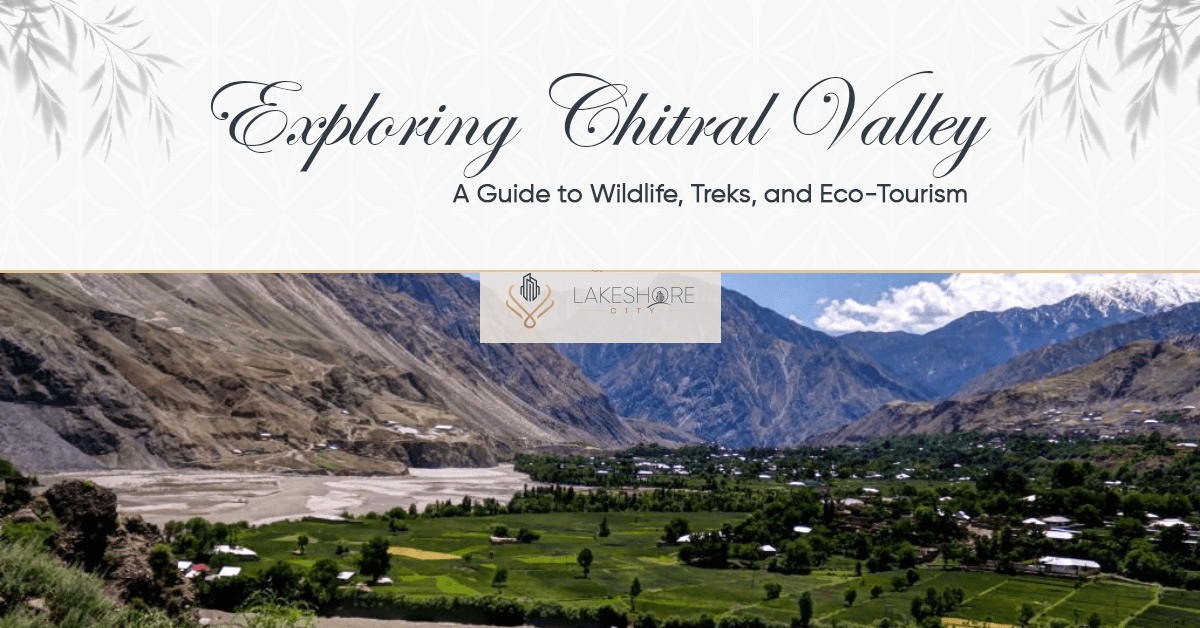How To Spot Wildlife at Chitral Valley
It is a unique and unusual experience to watch wild animals and birds in their native habitat, and it calls for patience and a basic grasp of their behaviors. The best chance of viewing wildlife is to go with a qualified local wildlife guide but remember that the season and weather also significantly influence it. It’s helpful to remember that winter offers more fantastic animal viewing than summer. The ideal times to view animals moving down to water sites to drink are sunrise and dusk. Animals travel more efficiently in poor weather conditions like rain and snow because they are forced to descend to lower heights.
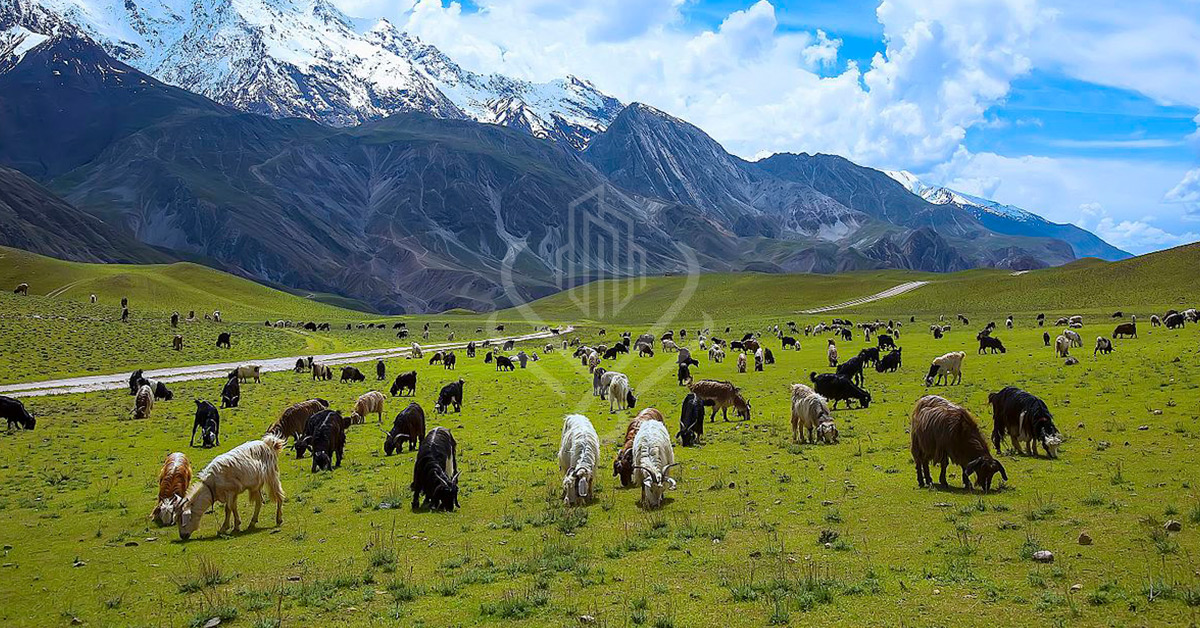
Additional details can be acquired at Chitral Town’s Divisional Forest Officer (Wildlife) office, and nearby conservation groups rent out tools like binoculars and telescopes. The rare snow leopard is one of the enormous mammals that roam a vast region for food. There’s also Markhor in the vicinity. Ibex, lynx, black bears, brown bears, grey wolves, striped hyenas, and critically endangered musk deer can all be found in the far northern mountains. Chitral has a large diversity of species for bird enthusiasts.
The Brahmini, Myna, and Sparrow live in the central valley and its villages. It is expected to see Monal, Koklass Pheasants, Chukor, Golden Eagles, and common kestrels further up in the valleys (alpine meadows and mountain cliffs). For birds that breed in Eastern Europe and Central Asia and spend the winter in the subcontinent, the mountain passes and valleys of Chitral are also a part of their migration route.
MADAGLASHT VALLEY
South-east of Chitral Town Principal towns of Bayband, Obara, Mathive, and Hussainabad 2. Area of the valley: 152 km; population: about 3,000 Languages: Persian and Khowar (Chitrali) Tourist attractions include the Gocharsar Waterfall, a blend of Persian and Chitrali culture, a variety of handicrafts, and hikes to the Dir Kohistan and Laspur valleys as well as the Goleen and Laspur valleys in Chitral. Observation of a variety of birds and animals.
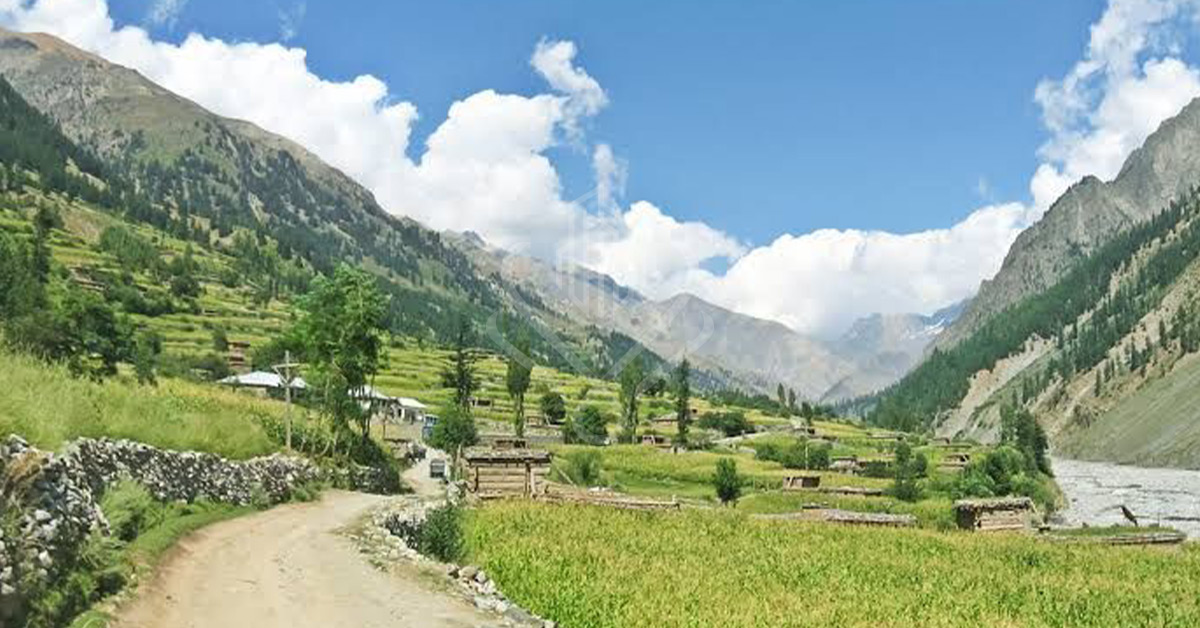
The route to take: Daily (4×4) transport is available at designated times between Drosh and Madaglasht. Getting from Drosh to the valley’s central village takes three hours. To reach the valley, renting a 4×4 vehicle at Drosh and Chitral is advised. Lodging: There are family-run guest houses in the area. It’s best to bring sleeping bags and tents for large tourist parties.
In the valley, there are few options for eating out. However, there might be some traditional food available. It is best to have boiling or bottled water with you.
BIRMOGLASHT
Now known as Chitral GOL National Park, Birmoglasht is renowned for the summer palace of Mehtar of Chitral and has stunning panoramic tourist observation points at its summit.
GOLEEN VALLEY
Where: Northeast of Chitral Town
The principal settlements are Goleen Payeen, Chashma, Bubaka, Izghor, 2 Birmogh, and Istoor. Area of the valley: 532 m Population: about 2,000 individuals Khowar (Chitrali) language Destination attractions: Chitrali culture mixed with other influences; Chattodok Lake; treks to the Laspur, Madaglasht, and Koghozi valleys. Observations of wildlife include ibex, markhor, chukor, and ram chukor. The route to take: Between Chitral and Goleen, there is daily transportation (4×4) accessible at predetermined times. The first settlement in the valley is an hour’s drive from Chitral. In Chitral, renting a 4×4 car is advised.
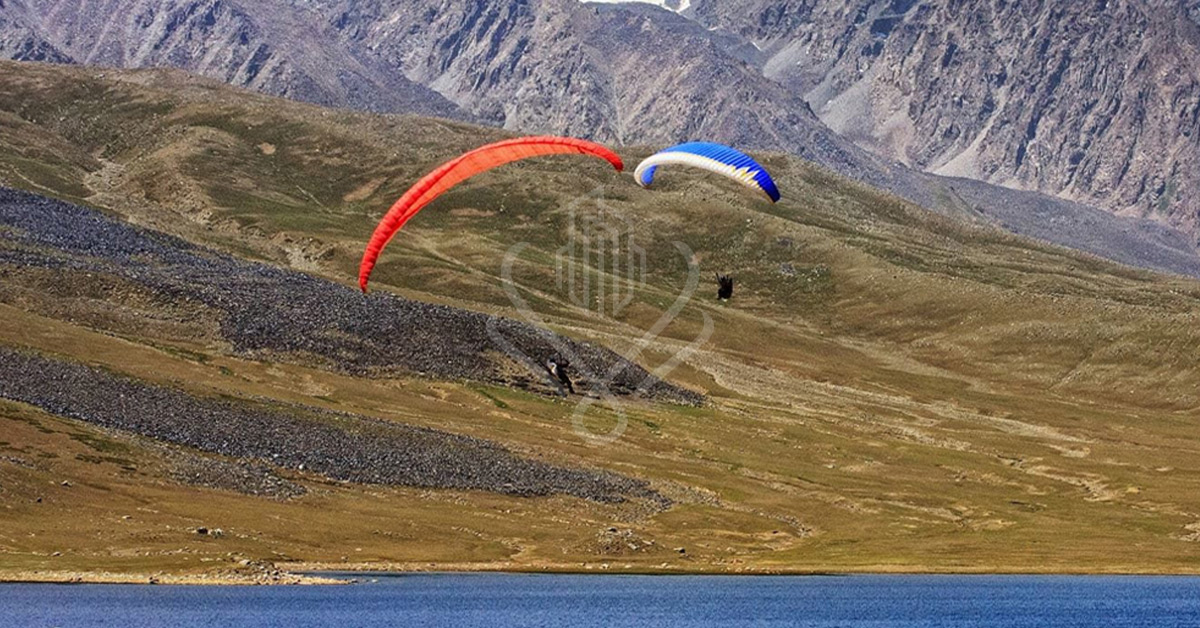
Accommodations: In Izghor village, a modestly equipped tourist hut under community management can accommodate four to six people. It’s best to bring sleeping bags and tents for large tourist parties. The lower pasture at the end of the valley is ideal for camping. There are few places to buy food in the valley, but you can find some traditional food there. It is best to have boiling or bottled water to purchase food in the valley, though you can find traditional food there. It is best to have boiling or bottled water with you.
LASPUR VALLEY
Where: Northeast of Chitral Town Principal towns: Sur Laspur, Gasht, Raman, Broke, Baleem, Onshot, Herchin, Phargram, and Shihidas 2. Area of valley: 929 km; population: around 7,500 Khowar (Chitrali) language Attractions for tourists include Shandur Lake, the culture of the Chitralis, hikes to the Goleen Valley and Booni Zom, the Ghizar Valley in Gilgit-Baltistan, the Kumrat Valley in Dir Kohistan, the Mohad and Gabral Valleys in Kalam, and wildlife sightings include yaks, ibex, chukar, and ram chukor—the route to take: Daily 4×4 public transportation between Booni and Laspur at predetermined times. In Chitral, renting a 4×4 car is advised.
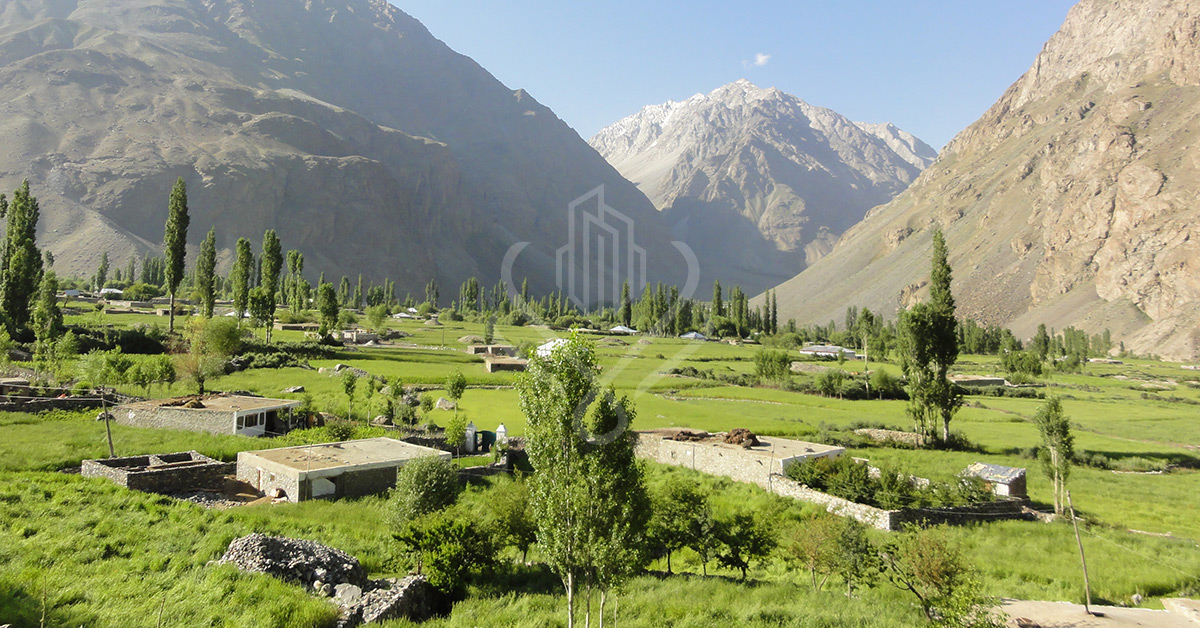
Accommodations: In Izghor village, a modestly equipped tourist hut under community management can accommodate four to six people.
It’s best to bring sleeping bags and tents for large tourist parties. The lower pasture at the end of the valley is ideal for camping. There aren’t many places to buy food in the valley, but you can find some traditional food there. It is best to have boiling or bottled water with you to purchase food in the valley, though you might be able to find traditional food there. It is best to have boiling or bottled water with you.
GARAM CHASHMA
The place is northwest of Chitral, 1859 meters (6,100 feet) above sea level 45 km (28 miles) separates you from Chitral. Languages: Khowar & Yidgha Visitor Attraction: An old Injigan valley that is today known as Garam Chashma (Hot Spring) is located two hours’ drive (four-wheel drive) northwest of Chitral. The valley is highly valued for its sulfur-rich hot springs, the water of which has long been thought to be a natural remedy for rheumatism, gout, persistent headaches, and other skin illnesses.
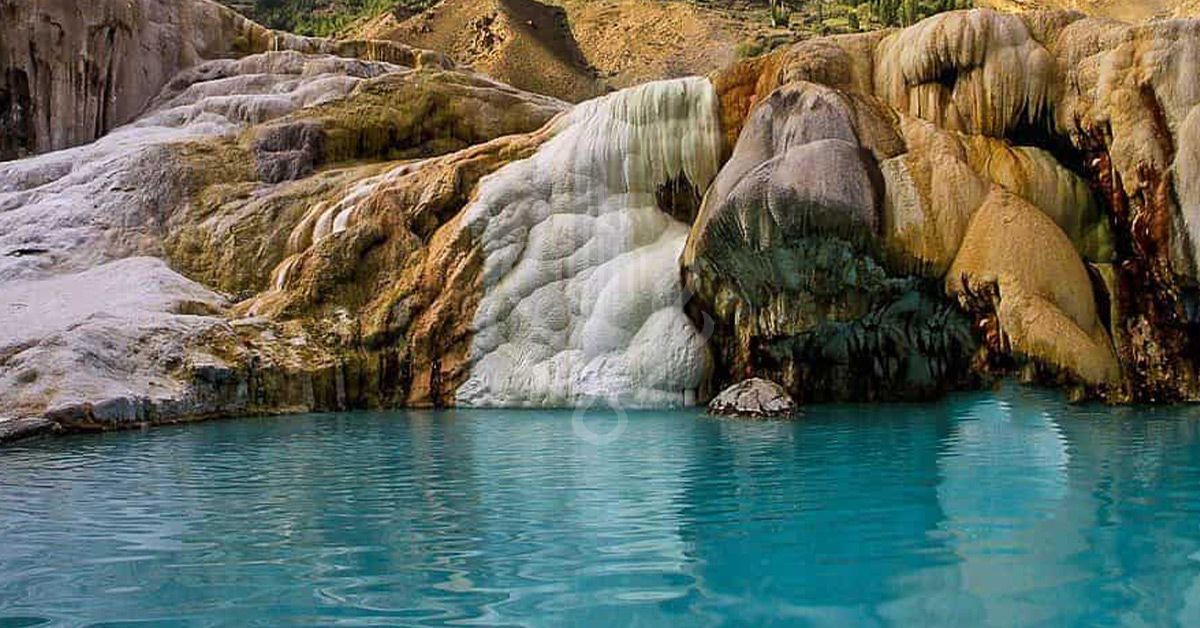
As a result, during the season, both local and foreign tourists frequently visit the valley. Near the springs, “Hamams” (baths) have been built for the convenience of visitors. Foreign visitors who wish to take a hot bath in the hammams (baths) are charged a fee. An untouched, picturesque valley of orchards, lush meadows, and snow-capped peaks is Garam Chashma. It’s the ideal location for rock climbing, mountaineering, fishing, trekking, hiking, hunting, and camping. Accommodations: Garam Chashma offers several hotels and eateries. However, it is advised to stay at Hotel Injigan because it has a lovely, hot pool and is reasonably priced. The Afghani eateries also serve trout fish with veggies and Afghani rice—additionally, a Civil & Works Rest House.
WHAT TO DO
IN VILLAGES / ON PASTURES
Make an effort to go in small groups. Be mindful of the customs of the area. Dress appropriately; people in the area frequently like seeing visitors dressed in traditional garb. Before taking any pictures, especially of women or places of worship, get permission. Say “yes” when you are served local food. Invest in the local economy by purchasing goods and handicrafts from them.
WHILE TREKKING
Get porters and guides from the area. Ensure you properly dispose of your litter, burn paper, gather plastic, flatten cans, and bring them back. Make sure your campsite is tidy when you leave. For cooking, use kerosene or gas. Select restroom locations at least 50 meters from your campground and away from rivers or water sources (larger groups can build a toilet pit). Set a good example for your porters and guides by outlining these rules and their justification.
WHILE TREKKING
Avoid disturbing wildlife by creating excessive noise. Never go hunting, kill an animal, or take out any plants. Never dispose of trash in your campground or on the trails. Never cook with wood, especially green wood. Never etch or sculpt on rocks or trees.
Visitors are welcome to explore the pastoral people’s daily lives and take in the diversity of the Chitral Valley’s natural surroundings. Please do not, however, camp near communities out of consideration for local ladies and customs.
TREKKING
Moderate route from Madaglasht to Goleen via the Krui Utch Trek Time frame: 3 days Green pastures; views of snow-covered peaks and glaciers on the Dir Kohistan side; Gocharsar Waterfall; Rohigal Pass; Chattodak Lake; Juniper forest; encounters with a variety of animals and birds, such as chukor and ram chukor, brown bear, grey wolf, Himalayan ibex, and lynx, are among the attractions.
Goleen through Phargram Pass to Laspur Trek: Challenging Time frame: 4 days Attractions include the pastures of Darkhtan, Dangrikro, Reshungol, and Dookadaki; the Jonali Polo Ground; Phargram Pass; an aerial view of Laspur Valley; and sightings of a variety of animals and birds, such as snow leopards and Himalayan ibex. Trekking from Laspur to Mahodand across Katchi Khani Pass: Moderate Time frame: 4-5 days Attractions: Himalayan ibex, snow leopard, brown bear, grey wolf, Indian civet, Iynx, musk deer, monal pheasant, Himalayan snow cock, and chukor are among the creatures and birds that can be spotted in Birch Forest, Mahodand, and Nelser lakes. Trekking the Beshqar Gol from Laspur to Kumrat: Moderate Time frame: 4-5 days Birch woodland; Beshqar and Zego Lakes are popular tourist destinations. Various species and birds, such as Himalayan ibex, snow leopard, brown bear, grey wolf, Indian civet, Iynx, musk deer, and monal, have been spotted there.
ECO-TOURISM IN CHITRAL VALLEY
Recently, eco-tourism has become a catchphrase among environmentalists and travel agencies worldwide. However, what precisely is ecotourism? Simply said, eco-tourism is travel that considers both the environment and society. It seeks to preserve the environment by giving local communities the necessary tools—such as financial support and increased public awareness. Other elements include the preservation of the region’s history and culture. Eco-tourism makes sense in light of the detrimental effects that mass tourism can have on local culture and the environment.

Consider going on vacation with a small group of like-minded persons rather than in large groups. Communities may be better equipped to support fewer people, have greater access to porters and guides in the area, and have a higher possibility of seeing wildlife due to this strategy. As an eco-tourist, you are no longer just a guest; you can actively contribute to preserving the environment and fostering intercultural understanding.
CHECKLIST FOR TREKKING AND CAMPING TRIP

The following checklist will assist you in properly preparing for your upcoming hiking expedition.
- Things for personal usage and apparel
- Huge knapsack to fit all necessary hiking equipment.
- Including a rain jacket, food pack, and camera in your daypack.
- A high-quality sleeping bag is necessary to tolerate low temperatures at night.
- Closed-cell foam sleep surface.
- Sturdy footwear for trekking featuring robust rubber soles.
- To wear while moving about the camp and going about.
- Water and wind-resistant trousers and jacket.
- Two or three additional clothes, ideally with sleeves and full-length trousers.
- 3-5 pairs of socks (made of nylon and wool). Sun Hat Material: To provide shade and prevent sunburns.
- Wear a woolen cap on chilly nights to keep your head warm.
- A pair of water-resistant and woolen gloves.
- Solar Glasses
Items For Group:
A lightweight, waterproof tent for two or three people.
- Little fuel-powered stove.
- Water can be stored in a plastic can.
- First aid and essential medications in a medical kit.
- Cooking utensils (based on the number of people).
- Food items (based on the menu, the number of people traveling, and the length of the trip).
- Washing kit (detergents and soap used in the kitchen and bathroom).
- Box of matches. (Packed in a tight-fitting bag)
- Compass and map.
- I am spotting scope or binoculars.
- A camera with extended battery life.
- FM and AM radio.
DISTANCE CHART AND ESTIMATED TRAVEL TIME
| Places | Distance |
| Peshawar to Chitral | 370 – km |
| Dir to Chitral | 150 – km |
| Dir to Lowari | 74 – km |
| Chitral to Garam Chashma | 55 – km |
| Chitral to Birmughlasht | 15 – km |
| Chitral to Koghzoi | 12 – km |
| Chitral to Booni | 55 – km |
| Chitral to Mastuj | 105 – km |
| Chitral to Shandur | 155 – km |
| Chitral to Gilgit | 380 – km |
| Chitral to Ayun | 25 – km |
| Chitral to Bomurate | 45 – km |
| Chitral to Rumbur | 42 – km |
| Chitral to Drosh | 45 km |
| Chitral to Madaglasht | 60–km |
| Chitral to Lowari Top | 90 |
Conclusion
Chitral Valley entices nature lovers and explorers with its exceptional natural beauty, varied animals, and rich cultural legacy. Along with participating in a fantastic adventure, eco-tourism allows you to experience the region’s magnificent landscapes and assist the local communities while also helping to preserve the area’s unique ecology. Whether you want to track down rare species, take on strenuous hikes, or just get a taste of the local way of life, Chitral Valley provides a fantastic and environmentally conscious travel experience.
FAQs
Q1: What makes Chitral Valley an attractive destination for wildlife enthusiasts?
Ans: Chitral Valley is renowned for its diverse wildlife, including snow leopards, ibex, musk deer, and various bird species, making it an ideal destination for wildlife enthusiasts.
Q2: What is eco-tourism, and why is it significant in Chitral Valley?
Ans: Eco-tourism is a form of responsible travel that focuses on preserving the environment and supporting local communities. Chitral Valley needs to maintain its natural beauty and cultural heritage.
Q3: When is the best time to spot wildlife in Chitral Valley?
Ans: The best times to spot wildlife are sunrise and sunset, particularly in winter when animals are forced to descend to lower altitudes for food and water.
Q4: What are some popular trekking routes in Chitral Valley?
Ans: Notable trekking routes include Madaglasht to Goleen, Goleen to Laspur via Phargram Pass, and Laspur to Mahodand across Katchi Khani Pass.
Q5: What precautions should trekkers take while in Chitral Valley?
Ans: Trekkers should go in small groups, respect local customs, obtain permission before taking photos, and properly dispose of waste to minimize their environmental impact.
Q6: What unique experience can tourists have in Garam Chashma?
Ans: In Garam Chashma, tourists can soak in sulfur-rich hot springs believed to have therapeutic properties for various ailments, including rheumatism and skin conditions.
Q7: What languages are spoken in Chitral Valley?
Ans: The primary languages spoken are Khowar (Chitrali) and Persian.
Q8: What are some essential items for a trekking and camping trip in Chitral Valley?
Ans: Essential items include a sleeping bag, sturdy footwear, clothing for varying weather conditions, and a well-equipped medical kit.
Q9: What is the significance of observing eco-tourism practices in Chitral Valley?
Ans: Eco-tourism helps preserve the environment, supports local communities, and ensures a sustainable and responsible travel experience.
Q10: What should tourists remember about interacting with local communities in Chitral Valley?
Ans: Tourists should dress appropriately, respect local customs, and support the local economy by purchasing goods and handicrafts from the community.
Our Featured Article:
Read More: Chitral Valley: Discover The Untouched Paradise in Pakistan
Don’t miss the chance to invest with Lakeshore! Secure your investment today by investing your financial investment with Lakeshore in the following available options like Lakeshore City, Lakeshore Club, and Lakeshore Farms.
For More updates, please Contact +92 335 7775253 or visit our website https://lakeshorecity.com/
Lakeshore City is the upcoming elite lifestyle at Khanpur Dam. Offering no parallel amenities for the members and owners of distinguished farmhouses.
Become Part of Luxurious Lifestyle
Contact: 0335 7775253


